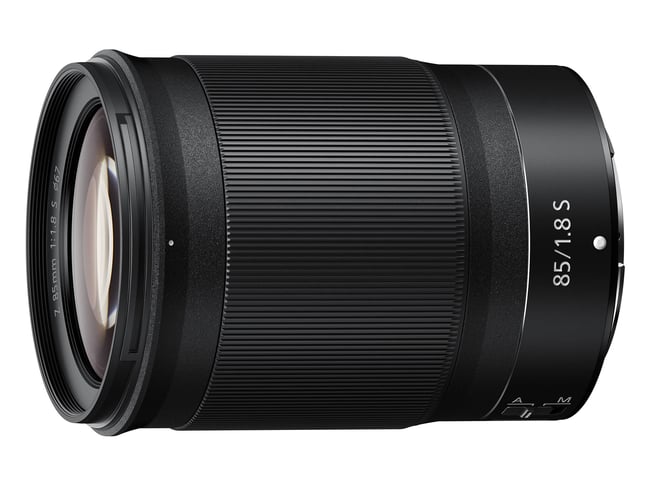Introduction
Nikon released its first portrait lens for the Z mount with the announcement of the NIKKOR Z 58mm f/0.95 S Noct, but it was more of a “show off” lens to demonstrate the possibilities of the new system more than anything, especially considering its exorbitant $8K price-tag. The portrait lens everyone else had been waiting for was a reasonably-priced 85mm prime, which Nikon finally delivered in July of 2019. The Nikon Z 85mm f/1.8 S arrived with a price tag of $800 USD – a significant increase over the price of its predecessor, the Nikon 85mm f/1.8G.
While many got disappointed by the price of the new lens, it really should not come as a surprise for those who have been keeping track of the Z mount lens announcements. Basically, Nikon has completely changed the status of its f/1.8 lenses – each and every single one of them we have tested so far has been an optical marvel, and the Nikon Z 85mm f/1.8 S is not an exception.
The Nikon Z 85mm f/1.8 S is a professional-grade lens aimed at professionals and enthusiasts, who need a high-quality portrait lens to pair with a mirrorless Nikon Z body. Its large aperture of f/1.8 is great for low-light photography and subject isolation, rendering beautiful portraits with smooth backgrounds and background highlights known as “bokeh“.

Optically, the lens is comprised of 12 elements in 8 groups, two of which are extra-low dispersion (ED) elements. Nikon did not incorporate any aspherical lens elements into the design, because they are known to negatively impact the lens’ bokeh performance. The Nikon Z 85mm f/1.8 S is coated with both Nano Crystal Coat and Super Integrated Coating to reduce ghosting and flare. There are nine rounded aperture blades, and the lens is fully weather-sealed, similar to other Nikon Z S primes.

In this review, I will provide a thorough analysis of the Nikon Z 85mm f/1.8 S lens, along with image samples and comparisons to other 85mm lenses on the market.

Compared to Other 85mm Lenses
Although Nikon is most likely going to announce an 85mm f/1.2 S lens in the future (yes, that’s now possible with the Z mount), it is not going to be a cheap lens, and it will likely be much bigger and heavier compared to this f/1.8 version. Until such lens arrives, the Nikon Z 85mm f/1.8 S is likely to remain as the top choice for the Z mount, other than adapted F-mount 85mm primes, which there are plenty of. Thankfully, the 85mm prime selection is quite extensive for a Nikon shooter. Just take a look at some of the lens options available today:
- Nikon AF-S NIKKOR 85mm f/1.8G
- Nikon AF-S NIKKOR 85mm f/1.4G
- Mitakon Zhongyi Speedmaster 85mm f/1.2
- Samyang AF 85mm f/1.4
- Samyang 85mm f/1.4
- Sigma 85mm f/1.4 DG HSM Art
- Tamron SP 85mm f/1.8 Di VC USD
- ZEISS Planar T* 85mm f/1.4 ZF.2
- ZEISS Milvus 85mm f/1.4 ZF.2
- ZEISS Otus 85mm f/1.4 ZF.2
For those who are willing to go with a smaller maximum aperture and look into other third-party lens options, there are even more options available. This is all good news for Nikon shooters, as they have so many options to pick from.

So where does this put the new Nikon Z 85mm f/1.8 S, and does it even have a place among such a vast selection of lenses? To me, the whole point of going with Nikon mirrorless is the Z mount advantage, as well as to go lighter and smaller. While some of the above lenses are exceptional, they all need to be paired with an FTZ adapter, which makes the combo larger, less reliable (mostly due to AF differences between native vs adapted lenses) and overall less convenient to use.

Still, let’s take a look at how some of the lenses from the above list compare to the Nikon Z 85mm f/1.8 S:
| Lens Feature | Nikon Z 85mm f/1.8 S | Nikon 85mm f/1.8G | Nikon 85mm f/1.4G | Sigma 85mm f/1.4 Art |
|---|---|---|---|---|
| Camera Mount | Nikon Z | Nikon F | Nikon F | 5 Mounts |
| Elements / Groups | 12 / 8 | 9 / 9 | 10 / 9 | 14 / 12 |
| Special Elements | 2 ED | N/A | N/A | 1 ASPH, 2 SLD |
| Coating | Nano, SIC | SIC | Nano, SIC | SML |
| Diaphragm | 9 (Rounded) | 7 (Rounded) | 9 (Rounded) | 9 (Rounded) |
| Filter Size | 67mm | 67mm | 77mm | 86mm |
| Weight | 470g | 350g | 595g | 1,130g |
| Price | $799 | $479 | $1,599 | $1,199 |
| Lens Feature | Tamron 85mm f/1.8 | Samyang 85mm f/1.4 | Zeiss Mvs 85mm f/1.4 | Zeiss Ots 85mm f/1.4 |
| Camera Mount | 3 Mounts | 3 Mounts | 2 Mounts | 2 Mounts |
| Elements / Groups | 13 / 9 | 9 / 7 | 11 / 9 | 11 / 9 |
| Special Elements | 1 LD, 1 XLD | 1 HYBRID ASPH | 7 LD | 1 ASPH, 6 LD |
| Coating | eBAND, BBAR | UMC | ZEISS T* | ZEISS T* |
| Diaphragm | 9 (Rounded) | 9 (Rounded) | 9 (Rounded) | 9 (Rounded) |
| Filter Size | 67mm | 77mm | 77mm | 86mm |
| Weight | 660g | 480g | 1,210g | 1,140g |
| Price | $749 | $699 | $1,799 | $1,199 |
As you can see, the Nikon Z 85mm f/1.8 S differs quite a bit from its competition. It is the second lightest lens in the group after its 85mm f/1.8G sibling, and it is reasonably inexpensive when compared to some of the exotic third-party lenses.

I have done my share of shooting with such heavy lenses, and I am not looking forward to going back to incurring more back pain just to have a lens that is two-thirds of a stop brighter. I am fully aware of the fact that I can get smoother bokeh and better subject isolation capabilities with f/1.4 lenses, but having previously owned both the Nikon 85mm f/1.4G and 85mm f/1.8G lenses and shooting them for many years, I don’t mind staying with an f/1.8 lens, provided that it is optically strong.

To me personally, the only four lenses in the above group I would be willing to invest in, would be the 85mm Nikon lenses, as well as the Tamron SP 85mm f/1.8. Everything else is either not good enough (Samyang), or way too big and expensive (Sigma and Zeiss). But that’s me. I know some people drool over the Zeiss Otus 85mm f/1.4, which is surely a very fine lens. But it is not a practical lens by any means, being manual focus, weighing over a kilo and costing $4.5K. I have seen many professional photographers with 85mm f/1.4 lenses out there, but I have never seen one with a Zeiss 85mm in the field. Manually focusing with an f/1.4 lens is not easy…

Build Quality
The Nikon Z 85mm f/1.8 S shares the same smooth, minimalistic design of other Z mount prime lenses. It has a plastic barrel with a plastic 67mm filter thread, although the rear part of the lens, the mount itself, and the focus ring are all made out of metal.
The lens feels fairly light when hand-holding, although it is definitely longer and heavier than its F-mount 85mm f/1.8G version. Still, unlike some of the big and heavy lenses like the Sigma 85mm f/1.4 Art, it is much easier to handle and balance on Nikon Z-series cameras.
The Nikon Z 85mm f/1.8 S attaches very securely on Nikon Z cameras, thanks to its four locking ears on the mount (vs three on Nikon F), and does not wobble at all. This is important, as it does not leave any chance to misalignment issues between the lens and the camera body, maximizing the performance of the lens. Similar to all other modern Nikkor lenses, there is a rubber gasket on the lens mount to prevent dust and other particles from entering into the camera body.
Unlike most other 85mm lenses out there (including Nikon’s own 85mm primes for the F-mount), the Nikon Z 85mm f/1.8 S is fully weather-sealed, thanks to nine different rubber seals that protect different parts of the lens. Nikon says that the lens is both dust and moisture-resistant. I had the chance to use the lens in extremely dusty conditions of Death Valley National Park and Abu Dhabi, as well as rainy conditions during my visit to Southern California, and the lens held up just fine.

Handling
The Nikon Z 85mm f/1.8 S only has a single A / M switch for switching between autofocus and manual focus, so aside from the switch and the focus ring (which you can program for other tasks if desired), there are no other controls on the lens to worry about.
The focus ring is large and easy to rotate. Due to having a focus-by-wire stepping motor, the focus ring is not coupled mechanically to anything, so it can be set up to perform different functions such as change lens aperture. If you decide to manually focus with the lens, keep in mind that the experience is completely different when compared to Nikon F lenses. Personally, I am not a big fan of the way Nikon implemented manual focusing on the Z system – I wish there was a way to set up manual focus parameters, such as focus throw speed and acceleration.

Thanks to the internal focus design, the front element of the lens does not rotate or move while focusing. This makes it easy to use circular filters on the Nikon Z 85mm f/1.8 S. Speaking of filters, if you are transitioning from the Nikon 85mm f/1.8G, make sure not to sell those 67mm filters with it, since the filter size is the same.
The Nikon Z 85mm f/1.8 S does not feature Vibration Reduction (VR), but if you use it on a camera body like the Nikon Z7 with in-body image stabilization (IBIS), you will be able to take advantage of all 5 axes of stabilization. By comparison, all Nikon F-mount lenses, including Nikon’s 85mm primes, will be limited to 3-axis IBIS.

Here is the construction of the lens, courtesy of Nikon:

The next page of this review covers the optical characteristics of the Nikon Z 85mm f/1.8 S, including focusing performance and sharpness tests in the lab. Click the menu below to go to “Optical Performance”:
Table of Contents
